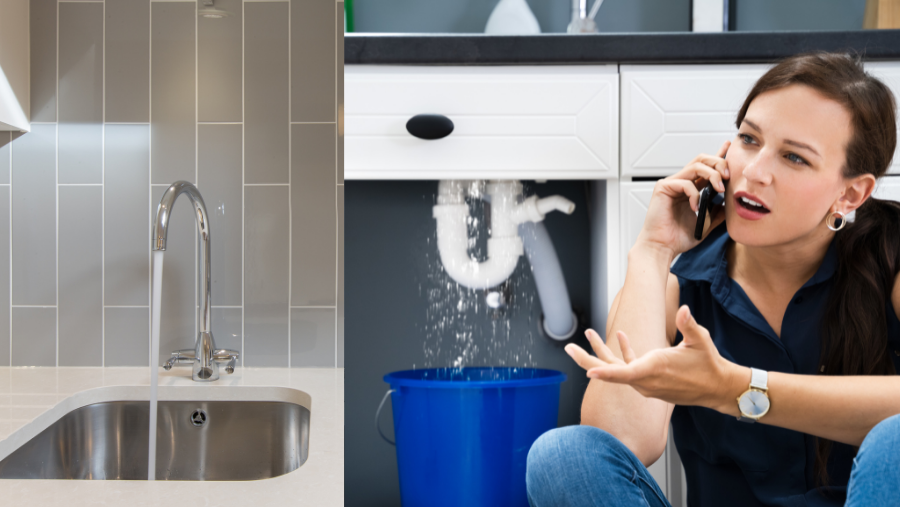Avoiding Water Damage in the Bathroom
Avoiding Water Damage in the Bathroom
Blog Article
This post below involving How to Repair and Prevent Bathroom Water Damage is exceedingly captivating. Read on and make your own personal findings.

The bathroom is exceptionally susceptible for moist buildup as well as potential water damages because of the constant use of water in it. This article supplies basic inspection strategies to assist spotting water damages risks.
The frequent use water in the restroom makes it extremely prone for wet build-up and also prospective water damages. By examining it consistently, you can minimize water related problems.
The following collection of evaluations is very easy to perform and also ought to be done as soon as in every 3 months in order to keep your washroom in good shape and to avoid potential water problems caused by the tub, the shower, pipe joints and also plumbing, sinks, cabinets, as well as the commode
Do not neglect executing these evaluations as well as be thorough while executing them. Keep in mind that these straightforward inspections can conserve you a great deal of cash by offering very early indicators for water damages
Bathtub as well as Shower
The shower and tub call for special interest and maintenance. Inspect the tiles and replace if fractured. Make sure that there is no missing out on cement between the ceramic tiles. Inspect as well as change cracked caulking at joints where the walls fulfill the flooring or the bath tub. Clogged drains and also pipelines problems will certainly protect against the tub from drying out and might indicate major troubles under the bathtub. Talk to a specialist instantly to stop structural damage. Take notice of discolorations or soft areas around the bath tub walls as they may show an internal leakage.
Plumbing
Signs for water damage are difficult to identify because many pipelines are installed inside the walls.
Pay unique focus to flooring as well as wall surfaces dampness as well as discolorations as they may suggest an unseen plumbing problem. Check wetness degrees in adjacent rooms also.
Sinks as well as Cabinets
Sinks and also closets are exposed to dampness and humidity day-to-day and are frequently ignored. Check consistently under the sink and on the countertop above it. Repair any type of drip in the catch as it may recommend drainpipe troubles. Check out the sink, slow draining pipes may suggest a blocked drain. Change sink seals if they are split or loosened.
The Commode
The bathroom is a prone water joint. Examine the water lines as well as search for leaks around the bathroom seat, in the hose pipe, and under the water tank. If you detect any signs of dampness on the flooring around the toilet, check for leakages in the toilet edge and also storage tank seals.
Understand that hanging bathroom bowl deodorants raises the opportunities for blockages.
Water Damage Signs In The Bathroom To Avoid Cleanup
Musty smell
This is one of the easiest signs to catch because musty smells are so odorous. The damp, earthy, moldy smell should be a big red flag. The smell will develop when moisture gets trapped in surfaces, and begins to facilitate mold growth. Leaking pipes under cabinets, inside walls, and behind shower fixtures will cause moisture to stay trapped and not dry, which will lead to mold growth and spread. As soon as you notice any musty smells in your bathroom, have it checked for hidden water damage and cleanup signs.
Visible mold
If the smell isn’t there to give it away, sometimes you will actually see mold growth. Finding mold in your bathroom is a serious problem, because mold is very harmful to your health. By the time mold growth is visible, it also means that water damage has already occurred and been present for some time. The only way the mold problem can be resolved is to find the source of the moisture and get it stopped. To safely and adequately remove mold, you need to have professionals handle the remediation. Do not waste any time in getting mold problems addressed, fixed, and sanitized so that you can protect you and your family from the many respiratory symptoms caused by mold exposure.
Damaged floors
Bathroom floors should be able to withstand some exposure to water while still remaining in good condition. However, when excess exposure or water leaks occur, they will begin to damage even the most water-resistant flooring. If you notice any cracking, bubbling, staining, or warping on your bathroom floors, there is probably a water leak somewhere causing the distortion. If you notice areas of the floor have become softer, or even have a spongy feeling, there is probably damage to the subfloor. Subflooring is typically made up of plywood. When plywood is exposed to water or moisture, it will absorb it. Once it has become saturated, the weight of the excess water will cause the wood to swell and soften. Check the floors in your bathroom frequently to catch any of these sings before they lead to damaged subflooring.
Changes on walls
When water leaks behind walls, it will cause changes in the drywall. Peeling plaster, blistering paint, and soggy wallpaper are all good indicators that excess water is building up behind the wall. Water leaking behind drywall will cause it to swell and be soft to the tough. If you start to notice gaps along the trim of your walls, or where tile meets the wall, it could also be a strong indicator that there is a leak behind the wall. Any changes, distortion, or damage on the walls should be evaluated as soon as you notice it to prevent further water damage and cleanup.

We were brought to that editorial on How to Prevent Bathroom Water Damage from a good friend on a different web page. In case you appreciated our blog posting if you please don't forget to share it. Thanks for going through it.
Quote Report this page